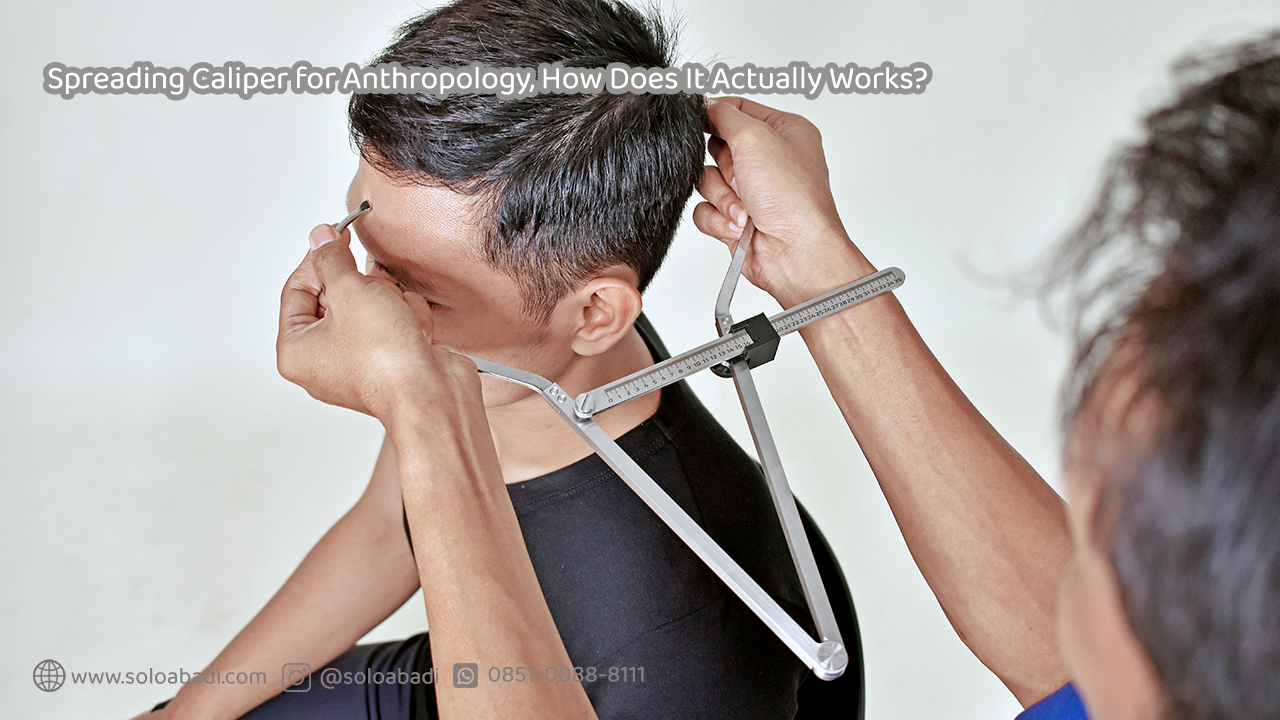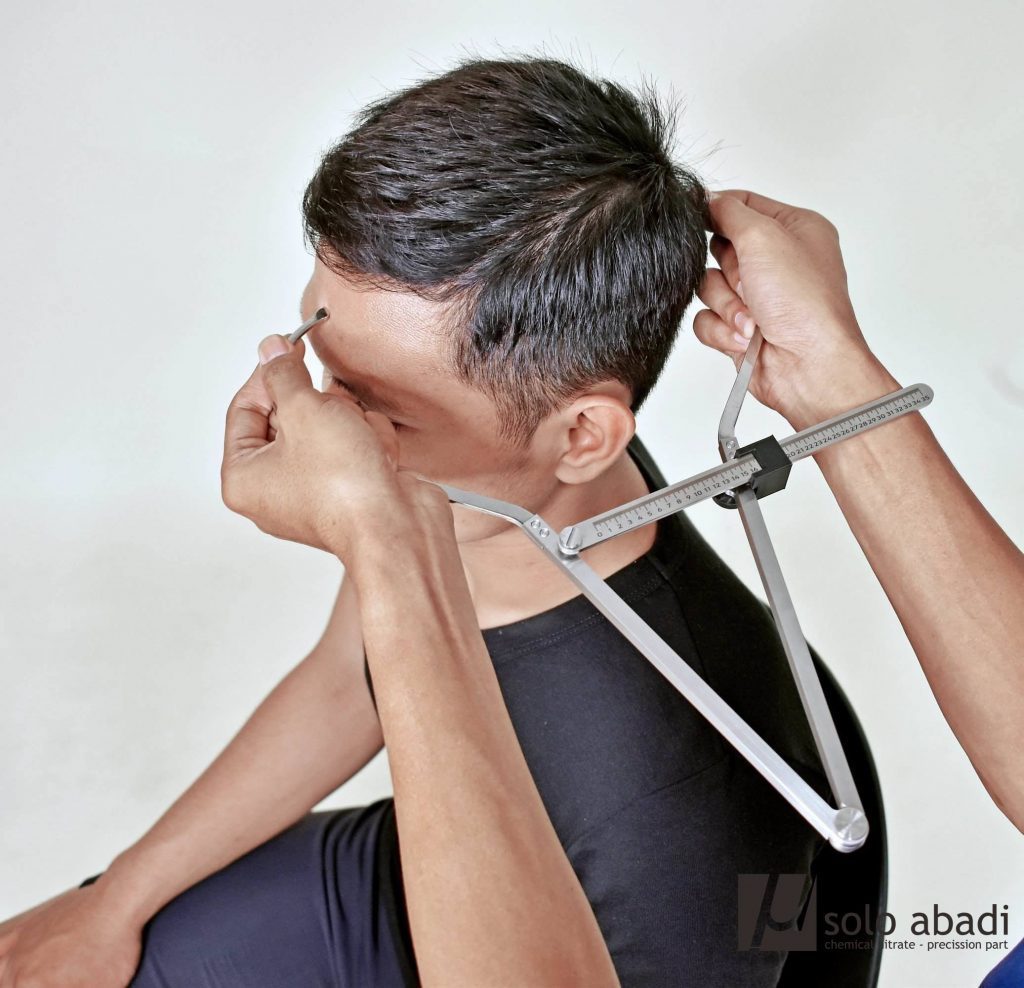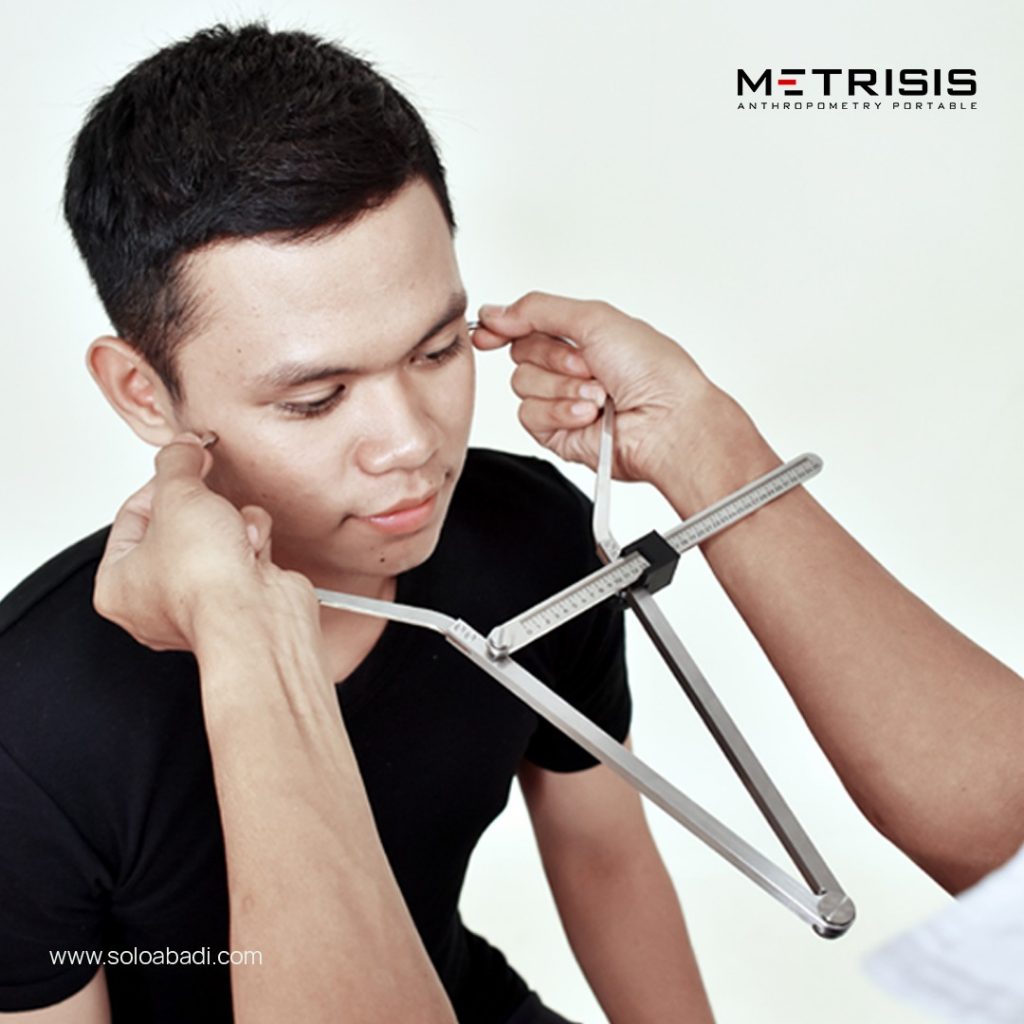The spreading caliper for anthropology is a vital instrument for physical anthropologists, aiding in the accurate measurement of curved and irregular surfaces, especially bones and skulls. This precision tool is central in anthropometric research, forensic anthropology, and evolutionary studies, where understanding physical variations is crucial for reconstructing human history and biological diversity.
What is a Spreading Caliper for Anthropology?
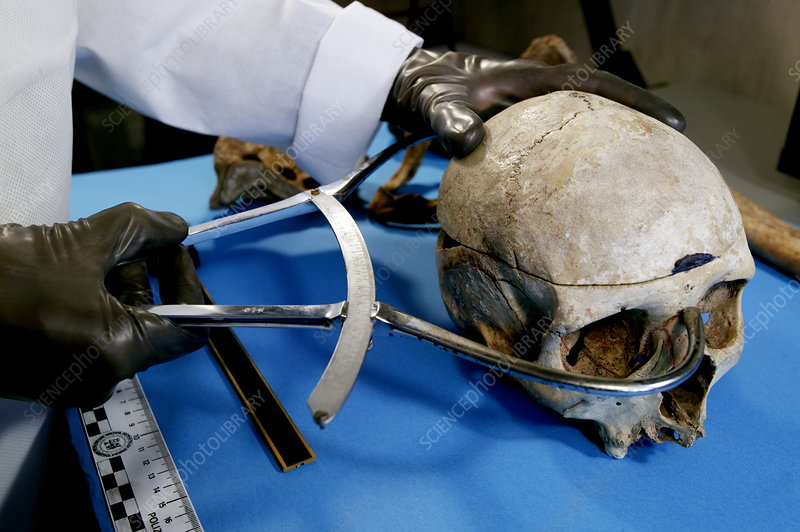
A spreading caliper is a specialized measuring tool with two arms that can pivot to capture distances between specific anatomical landmarks on curved surfaces, such as skulls or bones. Unlike straight calipers, spreading calipers are designed specifically to fit around curved or protruding areas, making them uniquely suited for anthropology. This enables researchers to gather highly precise measurements, crucial for comparing anatomical structures across individuals or groups.
Read More : 4 Types of Caliper in Anthropometric Measurement
How Does a Spreading Caliper Work?
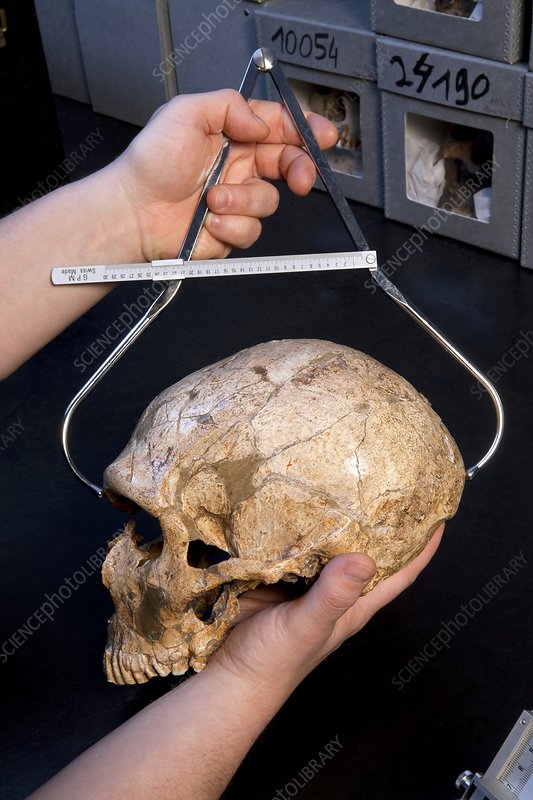
The spreading caliper for anthropology operates by aligning its arms with designated points on a skeletal structure, commonly a skull or larger bones with prominent contours. Here’s a step-by-step look at its function:
- Positioning the Caliper Arms: Anthropologists carefully position each arm on distinct anatomical landmarks. For instance, in craniometry, the arms might be placed on the widest points of the zygomatic arches to measure the bizygomatic breadth.
- Measuring the Distance: The arms are then spread apart to capture the exact distance between these landmarks. The hinge mechanism allows smooth and gradual adjustments, accommodating the natural curves of the bone.
- Reading and Recording: Once positioned, the distance can be read on the caliper’s scale. In digital models, the measurement appears in real-time on an electronic display, reducing reading errors.
- Data Analysis: The gathered measurements are recorded for analysis. In anthropology, multiple samples are often measured to gain insights into population variations, ancestral traits, and adaptations.
Read More : Sliding Caliper Measurements in Anthropology
Applications of Spreading Caliper for Anthropology
The use of a spreading caliper for anthropology extends into several vital areas of study:
1. Craniometric Studies
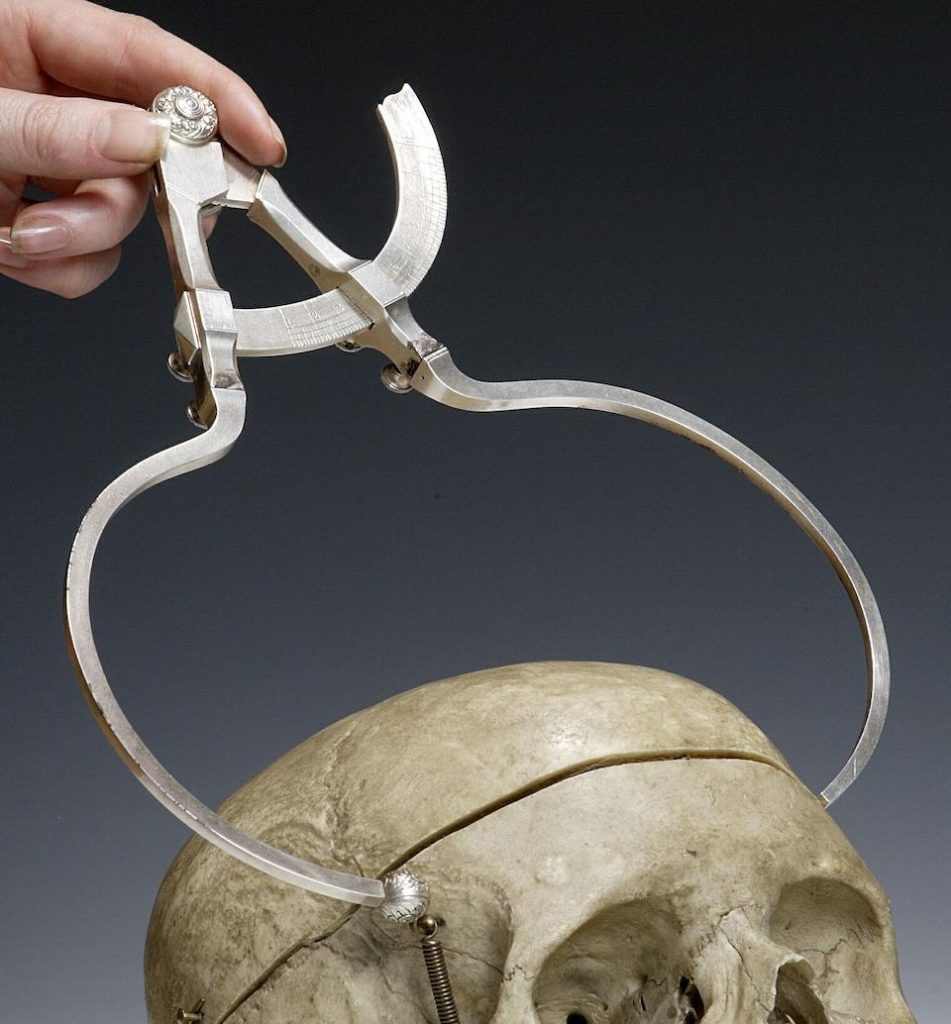
Craniometry, the measurement of skull dimensions, relies heavily on spreading calipers. These measurements help anthropologists study differences in cranial structure between populations or over time, giving clues about evolutionary adaptations. By using a spreading caliper for anthropology, researchers can track changes in cranial shape, size, and symmetry—elements essential to understanding population shifts and migratory patterns.
2. Forensic Anthropology
In forensic contexts, spreading calipers aid in identifying unknown individuals from skeletal remains. Measurements like the bizygomatic width, nasal height, and cranial length are used to help reconstruct key physical attributes. This data helps forensic anthropologists estimate characteristics such as age, sex, and ancestry, proving invaluable in solving crimes or identifying remains in archaeological contexts.
3. Biological Anthropology and Human Variation
Anthropologists use spreading calipers to study variations among populations, focusing on how physical characteristics differ based on genetic, environmental, and cultural factors. Measurements gathered with a spreading caliper for anthropology help scientists document and analyze traits that indicate population-specific adaptations, such as nasal breadth in cold climates or skull shape adaptations due to diet and lifestyle.
4. Evolutionary Research and Ancestry
By comparing skeletal measurements across historical and prehistoric samples, anthropologists can trace evolutionary changes in human physical features. Spreading calipers allow for precise measurements that reveal trends in cranial and skeletal morphology, highlighting the physical adaptations our ancestors developed over millennia.
Precision and Limitations of Spreading Calipers
While the spreading caliper for anthropology is a precise instrument, some factors can influence accuracy:
- Operator Skill: Proper technique and consistent positioning are crucial for accurate measurements. Misalignment can lead to minor discrepancies, which can accumulate across larger studies.
- Object Condition: Some bones or skulls may have fractures or irregularities, complicating precise measurement.
- Calibration: Regular calibration, particularly for analog calipers, ensures accuracy and consistency across multiple measurements.
Choosing the Right Spreading Caliper for Anthropology
A manual spreading caliper is a non-digital measuring tool that requires the user to read measurements directly from a vernier or other analog scale. Unlike digital calipers, manual calipers do not require batteries or electronics, making them durable and dependable for extended use in various conditions. In anthropology, manual calipers are used extensively to measure bone structures, skulls, and other curved anatomical features with high accuracy.
Advantages of a Manual Spreading Caliper for Anthropology
Manual spreading calipers offer several unique benefits for anthropological work, including:
1. High Durability and Longevity
Manual calipers are generally made from durable materials like stainless steel or hard alloys, which makes them less prone to wear and tear compared to their digital counterparts. Because they lack electronic components, they are also less susceptible to malfunctions or breakdowns, which can be critical during prolonged fieldwork or in harsh environments where digital devices may fail.
2. Reliability in Field Conditions
Many anthropological studies require measurements taken in remote locations or in archaeological sites where access to power sources can be limited. A manual spreading caliper for anthropology eliminates the need for batteries, making it a reliable choice when working in areas with limited or no access to charging facilities. This self-sufficiency allows anthropologists to work without interruptions caused by dead batteries or electronic malfunctions.
3. Precision with Less Complexity
Despite lacking the instant readout feature of digital calipers, manual spreading calipers offer precise measurements with their vernier scales, often down to fractions of a millimeter. For experienced anthropologists, reading and recording measurements manually can be just as fast as using a digital readout. The simplicity of a manual scale minimizes the risk of electronic misreads, ensuring a direct and accurate measurement.
4. Cost-Effective
Manual spreading calipers are often more affordable than digital models, making them accessible to individual researchers or organizations with limited budgets. The cost savings do not compromise accuracy, as manual calipers remain highly precise and effective for all standard anthropometric measurements. For students or new anthropologists building their toolkit, a manual caliper provides excellent value without sacrificing functionality.
Portable Anthropometry, 4 Types of Caliper In an Instrument
All types of calipers or measuring instruments can be found in the Anthropometry Portable Complete Set Series. This instrument can measure up to more than 100 body measurement dimensions. The anthropometric data can be easily applied in various sciences.
Anthropometry Portable Complete Set Series has been used by various institutions both at home and abroad in various fields such as education, government institutions, military, architecture to forensics.
For more information, please email us trough admin@soloabadi.com or via WhatsApp at 08510888111

